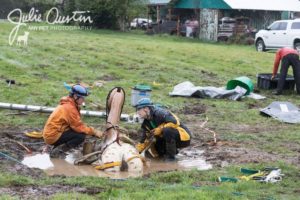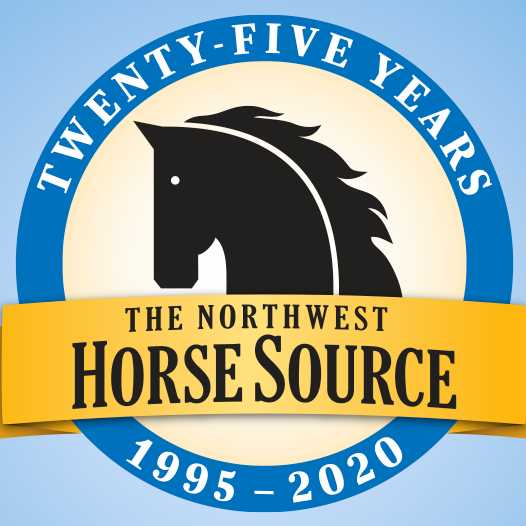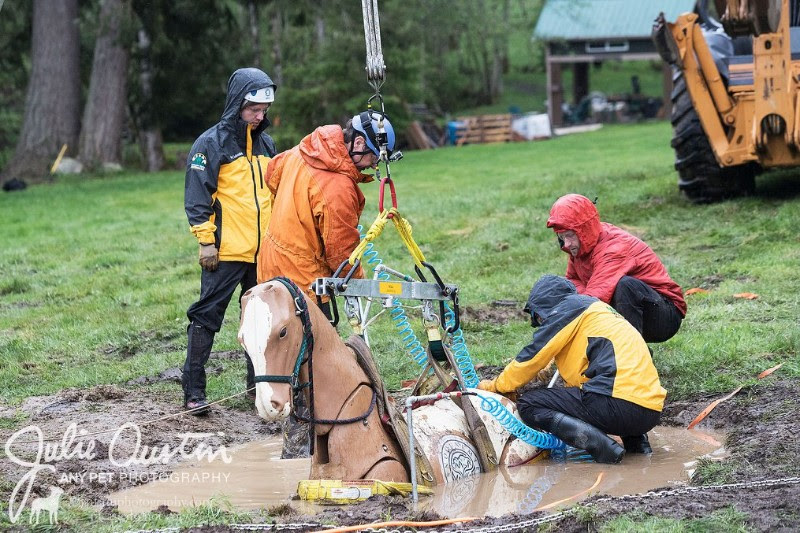As an additional bonus for this training, we had award-winning pet photographer Julie Austin out to take pictures. Julie was a great guest and sent us some wonderful photos to use. Thank you, Julie!

If you’ve ever stepped in mud and felt the resistance of pulling your foot back out, you’ve experienced a small bit of the resistance a horse or other large animal stuck in the mud is fighting.
To complicate matters, a large animal can’t just be pulled out without risk to their bodies and sometimes lives. The surface area of the legs, body, and especially tail make extraction dangerous and the forces are exponentially higher the more mud is in contact with the animal. Large animals are built to be supported by their legs. Damage to the the limbs and internal organs can occur when listing, if measures aren’t taken.
Fortunately, we have some excellent tools that make this easier.
WASART spent April’s monthly technical rescue training on the extraction of a large animal sunk deeply into mud. To prepare for the practice, our technical lead dug a hole with an excavator, filled it with water, and placed our mannequin, Joey, in the mud a week before practice.
On arriving at the practice site, the team found Joey well-set in his mud treatment. The team used backboards to place on the mud for better footing. We set up the bipod and pulled the sling under the mannequin to prepare for lift. Using a tube called a Nicopoulos Needle, that uses compressed air to help get the sling through the mud, made the job easier. Next we assembled mud lances, long tubes with connections for compressed air at their top ends. These allow us to inject air below the animal to help break the vacuum. Attaching the four of them to a diving air tank (donated by one of our volunteers), we placed them against the mannequin’s legs. The compressed air was turned on and the suction was broken long enough to allow for extraction.

One lesson learned from this rescue is not to let a mannequin sit in mud for a week. The mud had the opportunity to settle against the mannequin and dry quite a bit. During lift, we had a device just above the horse measuring the forces it would be experiencing on the sling. We felt the forces were too high and adapted by pausing, figuring out what the issue might be, and using the excavator to stir the nearly-dry mud at the bottom of the mud pit. Once loosened, the practice proceeded as expected.
In reality, a horse would not be in mud as dense as the mannequin experienced, but we are always appreciative when things go unexpectedly during a practice. It allows us a low-pressure situation to Wproblem solve so we have solutions practiced before we experience them in the field.
About WASART
WASART (Washington State Animal Response Team) is a 501(c)(3) non-profit all-volunteer organization that helps companion animals and livestock out of immediate crisis and dangerous situations. For example, if your horse falls into a well, your dog falls over a cliff, your cow gets stuck in a barn wall, or your community needs help sheltering animals for short-term issues such as threat of fire, WASART is trained to help out in these situations. Though WASART does not self-deploy, the team may be called out by an owner or an agency such as the fire department or sheriff’s office. www.washingtonsart.org
WASART responds to disaster and emergency situations involving all domesticated livestock and companion animals. We are not trained to handle wildlife or exotic species.

News from the horse industry. Sharing today’s information as it happens. The Northwest Horse Source is not responsible for the content of 3rd party submissions.







